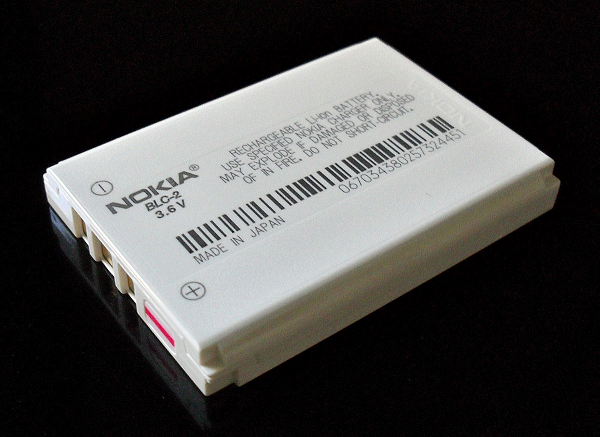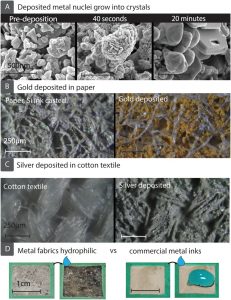Browse through all that’s new here!
NEW PRODUCTS THIS WEEK
Mini Oval Speaker with Short Wires – 8 Ohm 1 Watt: Hear the good news! This wee speaker is a great addition to any audio project where you need 8 ohm impedance and 1W or less of power. We particularly like this speaker as it is small and comes with nice skinny wires with a connector on the end. It has a handy “Molex PicoBlade” 1.25mm pitch 2-pin cable, which makes plugging into a board easy. Or you can cut off the connector and just solder/clamp onto the wires directly.
Lithium Ion Polymer Battery with Short Cable – 3.7V 350mAh: Lithium ion polymer (also known as ‘lipo’ or ‘lipoly’) batteries are thin, light and powerful. The output ranges from 4.2V when completely charged to 3.7V. This battery has a capacity of 350mAh for a total of about 1.3 Wh.
Lithium Ion Polymer Battery with Short Cable – 3.7V 420mAh: Lithium ion polymer (also known as ‘lipo’ or ‘lipoly’) batteries are thin, light and powerful. The output ranges from 4.2V when completely charged to 3.7V. This battery has a capacity of 420mAh for a total of about 1.55 Wh
Micro Servo Arm and Horn Set: If you bought a servo from us you probably got a bunch of plastic add-ons that you can snap onto the rotating part of the servo. These are called ‘servo horns’. For many robotics projects you’ll end up drilling or gluing to the horns to attach it to your armatures. But maybe you messed up, or you want to recycle the expensive motor part? This product comes with just the horns! No servo is included, so you can reuse the motors you’ve got.
Standard Servo Arm and Horn Set – 25 Spline: If you bought a servo from us you probably got a bunch of plastic add-ons that you can snap onto the rotating part of the servo. These are called ‘servo horns’. For many robotics projects you’ll end up drilling or gluing to the horns to attach it to your armatures. But maybe you messed up, or you want to recycle the expensive motor part? This product comes with just the horns! No servo is included, so you can reuse the motors you’ve got.
They mate with 25-tooth servo axles. We’ve found they’re compatible with our standard-size servo motors
Brass Heat-Set Inserts for Plastic – M3 x 4mm – 50 pack: Wanna improve the connection strength between your project’s 3D-printed parts, and also have nice clean surfaces? Instead of gluing bits together, or screwing plastic screws directly into your 3D prints, use strong and reusable machine screws and heat-set inserts. Heat set inserts are only a few cents a piece and have a grooved outside, with threads on the inside. Originally they were designed for injection molded parts but they work fabulously for 3D printed plastic as well.
Brass Heat-Set Inserts for Plastic – M3 x 3mm – 50 pack: You could use a plain soldering iron to try to heat-press these in – Heat up the iron and use it to press the insert in, wait for it to cool, then use like a hex nut that’s embedded inside the plastic. We strongly recommend our heat-set insert tool for soldering irons because it’s really hard to insert them straight otherwise and you risk damaging your print!
Plastic Micro Servo Adapter for LEGO Cross – 16mm long: Who doesn’t love LEGO and compatible bricks? Nobody! Except when we accidentally step on them. There are soooo many mechanical things one can make with those ubiquitous bricks, plates, gears, pulleys. Say a 13-meter high LEGO London Tower Bridge…
But what do you do when you want to add LEGO-compatible bricks and parts to your servo arms and horns? This is the adapter you need! Just push the axle housing end onto the shaft of your Micro Servo, and it’s ready to adapt to the standard LEGO-compatible cross axle parts, including gears and wheels. So easy, we think this will enable many creative endeavors.
Comes 1 x per order – fits our Micro Servo only! Not guaranteed to fit with any other kind of servo splines, and definitely doesn’t fit our standard servos.
2CDriver by Excamera Labs: I²CDriver is an easy-to-use, open source tool for controlling I²C devices and a great tool to help with quick driver development and debugging. It works with Windows, Mac, and Linux, and has a built-in color screen that shows a live “dashboard” of all the I²C activity. It uses a standard FTDI USB serial chip to talk to the PC, so no special drivers need to be installed. The board includes a separate 3.3 V supply with voltage and current monitoring. It’s kinda like a Bus Pirate with a display and great Python support.
SPIDriver by Excamera Labs: SPIDriver is an easy-to-use tool for controlling SPI devices and a great tool to help with quick driver development and debugging. It works with Windows, Mac, and Linux, and has a built-in color screen that shows a live logic-analyzer display of all SPI traffic. It uses a standard FTDI USB serial chip to talk to the PC, so no special drivers need to be installed. The board includes 3.3 and 5 V supplies with voltage and current monitoring. It’s kinda like a Bus Pirate with a display and great Python support.
New Products 6/5/19 Featuring SPIDriver by Excamera Labs! #adafruit
Stay in the loop at Adafruit.com/New!
Want to get this info beamed straight into your inbox?
New nEw NEWs From Adafruit is an email newsletter sent once a week to subscribers only.
It features new products, special offers, exciting original content, and more.
Sign-up for the Adafruit weekly Newsletter here: https://www.adafruit.com/newsletter


















